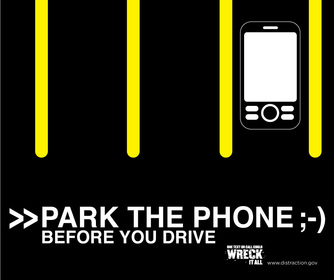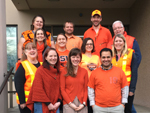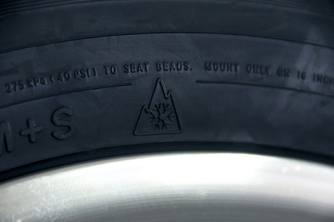Distracted Drivers Beware
April is Distracted
Driving Awareness Month and we are reminding drivers to do the right thing—put
your phone away when you get behind the wheel.
Distracted driving has become
one of the most common reasons for vehicle crashes. It only takes a few
seconds for a child to run into the street or for you to drive through a red
light or stop sign and crash, potentially killing someone or yourself. That’s
why during April, you will see an increased police presence on the roadways,
and anyone who is caught texting and driving, will pay. Violating Oregon’s
distracted driving laws can be costly—violating ORS 811.507 could cost you up to $2,500.
Save yourself the embarrassment and expense of getting pulled over
on account of your cell phone—and more importantly, maybe save someone’s life.
Your text message can wait.

 Go Orange Day is April 11
All roadway safety professionals across the country are encouraged to wear orange to proudly show their support of work zone safety. Go Orange Day is an important time to show your support of the roadway safety industry, especially to the families of victims who have lost their lives in work zones.
|
Studded Tire Season Ends
ODOT has extended studded tire season until April 15, 2018. WSDOT
is doing the same in Washington. Normally, travelers can use studded tires from
November 1 to March 31, but state law grants each state's transportation department
the ability to extend the season if it’s necessary based on projected weather
forecasts.
This year, the forecast suggests that our mountain passes will
receive some significant snow in the next few weeks. However, if you aren't
planning travel in those areas, we ask that you don't wait until the last
minute to remove your studded tires. We still encourage you to consider other
types of traction tires or chains to help minimize the damage that studded
tires cause to our roads. Studded tires cause an estimated $8.5 million in
damage each year to state highways.
In addition to studded tires, there are other types of traction
tires available that meet the Rubber Manufacturers Association standards for
use in severe snow conditions. These tires have an emblem on the tire sidewall
of a three-peaked mountain with a snowflake in the center. Research has shown
that these tires cause no more damage than standard all-weather radial tires,
but they provide better traction than studded tires on bare pavement.
Drivers with studded tires on their vehicles after the deadline
can be charged with a Class C traffic violation.
Our maintenance crews will continue to monitor highways and
weather forecasts and we'll work to clear any late-season snow or ice as soon
as possible. Always visit TripCheck.com or call 511
for the latest road conditions, chain requirements and weather updates.

Pedestrian Traffic Fatality Trends
The Governors Highway Safety Association has released a report
that identifies state and national trends in pedestrian fatalities in 2017.
This report also discusses strategies to reduce pedestrian and motor vehicle
crashes through a combination of design, education, and enforcement
recommendations. Read more
|